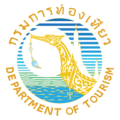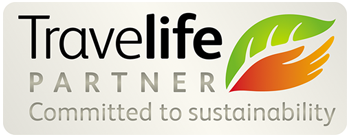Exploring Phang Nga’s Spiritual Side: Top 5 Must-Visit Temples

While many travelers know Phang Nga for its stunning limestone karsts and pristine beaches, this southern Thai province also harbors extraordinary spiritual treasures. Ancient temples, sacred caves, and ornate shrines dot the landscape, offering visitors a deeper connection to Thai culture and Buddhist traditions.
As someone who has spent considerable time exploring Phang Nga’s spiritual sites, I’ve discovered that these temples provide not just spectacular photo opportunities but also peaceful havens for reflection away from the tourist crowds. From dramatic cave temples to serene mountaintop sanctuaries, here are the five most remarkable temples that deserve a place on your Phang Nga itinerary.

1. Wat Suwan Kuha (The Cave Temple)
Perhaps Phang Nga’s most famous temple, Wat Suwan Kuha is unlike any other sacred site you’ll encounter in Thailand. Set inside a dramatic limestone cave, this temple combines natural wonder with spiritual significance in a way that captures the imagination.
As you approach the cave entrance, you’ll be greeted by playful monkeys that inhabit the area (keep any food well hidden!). A modest entrance fee grants you access to the cave’s interior, where the centerpiece awaits: a 15-meter-long reclining Buddha image that glows golden in the dim cave light. Dating back to the early 19th century, this Buddha figure represents the moment of passing into nirvana.
The cave itself is magnificent, with stalactites hanging from the ceiling and natural skylights that allow dramatic beams of sunlight to penetrate the darkness at certain times of day. Beyond the main Buddha image, you’ll find smaller shrines and Buddha figures tucked into niches in the rock walls.
What makes Wat Suwan Kuha particularly special is the contrast between the cool, dim cave interior and the lush jungle surroundings. The temple perfectly exemplifies how Thai Buddhism often incorporates natural features into its sacred spaces.
Location: About 12 km northeast of Phang Nga Town on Highway 4 Visiting hours: 8:00 AM – 5:30 PM daily Entrance fee: 100 THB for foreigners (free for Thai nationals) Dress code: Shoulders and knees should be covered
Insider tip: Visit in the early morning to avoid tour groups and experience the cave at its most peaceful. The light quality inside the cave is also better earlier in the day.
2. Wat Tham Ta Pan (Hell Temple)
For something completely different, Wat Tham Ta Pan offers one of Thailand’s most unusual and visually striking temple experiences. Often called the “Hell Temple,” this site is not for the faint-hearted but provides fascinating insights into Buddhist concepts of karma and the afterlife.
The temple’s main attraction is its depiction of Buddhist hell (naraka), accessed by walking through the mouth of a giant dragon statue. Inside, you’ll encounter gruesome dioramas showing the punishments that await those who commit various sins in their lifetime. These graphic scenes are designed to encourage ethical behavior and serve as stark reminders of Buddhist moral teachings.
Beyond the hell garden, the temple complex includes more traditional shrine halls and a small cave with Buddha images. The contrast between the peaceful upper temple and the unsettling hell representations creates a thought-provoking experience that stays with visitors long after they leave.
Despite its macabre elements, Wat Tham Ta Pan isn’t intended to scare but to educate about karma and moral choices. Many Thai families visit with children as a vivid way to teach Buddhist ethics.
Location: Near Phang Nga Town, about 10 km from the city center Visiting hours: 8:00 AM – 5:00 PM daily Entrance fee: Free (donations appreciated) Dress code: Modest clothing required
Insider tip: Combine this visit with Wat Suwan Kuha, as they’re in the same general area. The contrast between the serene reclining Buddha and the hell scenes makes for a thought-provoking day of temple exploration.
3. Wat Bang Riang (Wat Rat Upatham)
Perched dramatically atop a hill with panoramic views of the surrounding countryside, Wat Bang Riang is one of Southern Thailand’s most impressive temple complexes. Though less known to international visitors, this magnificent site has become increasingly popular with Thai pilgrims and tourists.
The temple’s most striking feature is its 45-meter tall golden standing Buddha image that towers over the complex and can be seen from miles away. Beside it stands a gleaming white 25-meter statue of Guanyin, the Chinese goddess of mercy, and a seated Buddha image under a grand shelter.
The main temple hall is equally impressive, with a soaring roof decorated in vibrant red and gold. Inside, intricate murals depict the life of the Buddha and scenes from Buddhist cosmology. The peaceful atmosphere and cool mountain breezes make this an ideal place for meditation or simple contemplation.
What truly sets Wat Bang Riang apart is its setting. From the temple terrace, panoramic views stretch across lush plantations, jungle-covered mountains, and distant limestone karsts. On clear days, you can even glimpse the Andaman Sea on the horizon.
Location: In Thap Put District, about 45 minutes drive from Phang Nga Town Visiting hours: 8:00 AM – 6:00 PM daily Entrance fee: Free (donations appreciated) Dress code: Modest clothing covering shoulders and knees
Insider tip: Visit in the late afternoon when the light turns golden and the heat of the day has passed. The sunset views from this elevated position are spectacular.

4. Wat Manee Sri Mahathat (The Crystal Temple)
Often overlooked by visitors hurrying between Phuket and Khao Lak, Wat Manee Sri Mahathat is a hidden gem that showcases contemporary Thai temple architecture at its most creative. Known locally as the “Crystal Temple,” this relatively new sacred site has quickly become an important spiritual center for locals.
The temple’s main hall is its most distinctive feature, with a façade adorned with thousands of small mirrored tiles that catch the sunlight and create a dazzling, shimmering effect. This modern interpretation of traditional Thai temple design feels both innovative and respectful of ancient traditions.
Inside, a revered Buddha image sits amid glittering decorations, while the walls feature contemporary murals depicting the Buddha’s life journey. The temple grounds include several smaller shrines, a meditation hall, and beautifully landscaped gardens designed for peaceful contemplation.
What makes Wat Manee Sri Mahathat special is how it represents living Buddhism in Thailand—not a historical relic but an active, evolving place of worship that remains central to community life. Visiting during morning or evening ceremonies allows you to witness local devotees in prayer, offering flowers, and receiving blessings from resident monks.
Location: Near Thai Mueang, about 25 km south of Khao Lak Visiting hours: 6:00 AM – 6:00 PM daily Entrance fee: Free (donations appreciated) Dress code: Modest clothing required
Insider tip: Try to visit during morning alms giving (around 7:00 AM) when monks receive food offerings from local devotees. This daily ritual offers insight into living Buddhist traditions.
5. Wat Phra Thong (Temple of the Golden Buddha)
Wat Phra Thong, located in neighboring Phuket but just a short drive from southern Phang Nga, houses one of Thailand’s most unusual Buddha images and a fascinating origin story that makes it well worth including in your temple itinerary.
The temple’s centerpiece is a half-buried golden Buddha image that appears to be emerging from the ground. According to legend, only the upper portion of the Buddha statue is visible because previous attempts to dig it out were met with swarms of hornets or illness. Eventually, people built the temple around the partially visible image, respecting its apparent wish to remain partially concealed.
The main image you see today is actually a replica covering the original, which has been carefully preserved. Around this central shrine, the temple complex includes several beautifully decorated halls, a museum of local artifacts, and peaceful gardens.
What makes Wat Phra Thong particularly special is its historical significance. The temple survived the devastating 2004 tsunami intact, while many surrounding buildings were destroyed. This has added to its mystique and spiritual importance for local people, who see it as a place of protection and resilience.
Location: Thalang area of northern Phuket, close to the Phang Nga border Visiting hours: 8:00 AM – 5:30 PM daily Entrance fee: Free (donations appreciated) Dress code: Modest clothing covering shoulders and knees

Understanding Temple Etiquette
Visiting temples in Thailand is a rewarding cultural experience, but it’s important to observe proper etiquette to show respect for these sacred spaces:
Dress Appropriately
- Cover shoulders and knees (both men and women)
- Remove hats and sunglasses when entering temple buildings
- Dress modestly – avoid tight or revealing clothing
- Some temples provide sarongs to borrow if needed
Footwear
- Always remove shoes before entering temple buildings
- Leave shoes neatly at the entrance, with soles not pointing toward the Buddha images
- Wear footwear that’s easy to slip on and off
Behavior
- Speak softly and avoid loud conversations
- Never point feet toward Buddha images (considered disrespectful)
- Women should not touch or hand items directly to monks
- Ask permission before taking photos of people praying or of monks
- Avoid public displays of affection
Offerings
- If you wish to make offerings, common items include:
- Incense sticks (usually three, representing the Buddha, Dharma, and Sangha)
- Flowers (representing the impermanence of life)
- Candles (symbolizing the light of Buddha’s teachings)
- Follow locals’ lead on how to place offerings and how to pray
Best Time to Visit Phang Nga Temples
Phang Nga’s temples can be visited year-round, but certain times offer different advantages:
November to February provides the most comfortable weather with lower humidity and temperatures, making temple exploration more pleasant. This coincides with the high tourist season, so famous sites like Wat Suwan Kuha may be busier.
Early mornings (7:00-9:00 AM) are ideal for visiting temples regardless of season. You’ll enjoy cooler temperatures, beautiful light for photography, and might witness morning alms giving and rituals.
Buddhist holidays offer a special opportunity to see temples at their most vibrant, with additional decorations and ceremonies. Important dates to consider include:
- Makha Bucha (February/March, full moon)
- Visakha Bucha (Buddha’s birthday, May/June, full moon)
- Asalha Puja and beginning of Buddhist Lent (July, full moon)
- End of Buddhist Lent (October)
These dates follow the lunar calendar, so they change slightly each year.
Temple Touring Practicalities
Getting Around
- Renting a scooter or car offers the most flexibility for temple exploration
- Many hotels in Khao Lak or Phang Nga Town can arrange private drivers for day trips
- Some temples are included in organized tours to James Bond Island or other attractions
- Taxis can be arranged for custom temple tours, but negotiate the rate beforehand
What to Bring
- Water bottle (staying hydrated is important in Thailand’s heat)
- Small bills for donations and entrance fees
- Sarong or light scarf (can be used to cover shoulders or knees if needed)
- Slip-on shoes for easy removal at temple entrances
- Respectful camera or phone for photos (ask permission when appropriate)
Accessibility
Most temples involve some stair climbing, particularly mountain or cave temples. Wat Suwan Kuha requires navigating uneven cave floors, while Wat Bang Riang involves a significant climb up multiple staircases. Plan accordingly if traveling with people who have mobility limitations.
Beyond the Top Five
While the temples above represent Phang Nga’s most spectacular sacred sites, several others deserve honorable mentions:
Wat Rat Uppatham (Wat Bangdung) features beautiful architecture and a peaceful atmosphere away from tourist routes.
Wat Tham Suwankhuha (not to be confused with the more famous cave temple) offers a unique setting inside a smaller limestone cave.
Wat Phra Nang Sang in Thalang (near the Phang Nga-Phuket border) is one of the oldest temples in the region with historical significance.
Phang Nga’s temples offer far more than just tourist photo opportunities – they provide windows into Thai culture, Buddhist philosophy, and local history. From dramatic cave shrines to mountaintop sanctuaries, these sacred spaces complement the province’s natural beauty with spiritual depth.
What makes temple exploration in Phang Nga special is how these sites remain primarily places of worship rather than tourist attractions. Visit with an open heart and respectful attitude, and you might find that these temples offer not just visual splendor but moments of unexpected serenity amid your travels.
Whether you’re a spiritual seeker, a cultural enthusiast, or simply looking to experience Thailand beyond its beaches, Phang Nga’s temples reward those willing to venture beyond the standard tourist trail.
Have you visited any temples in Phang Nga? Share your experiences or questions in the comments below!






